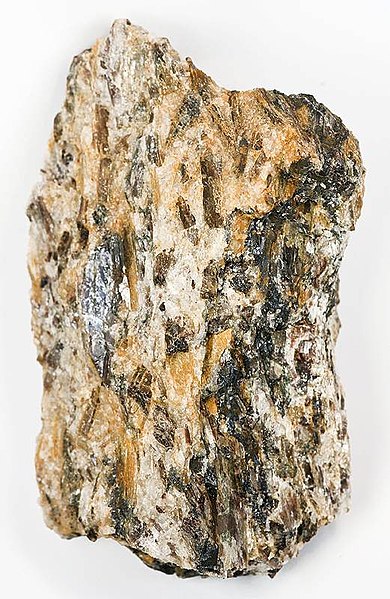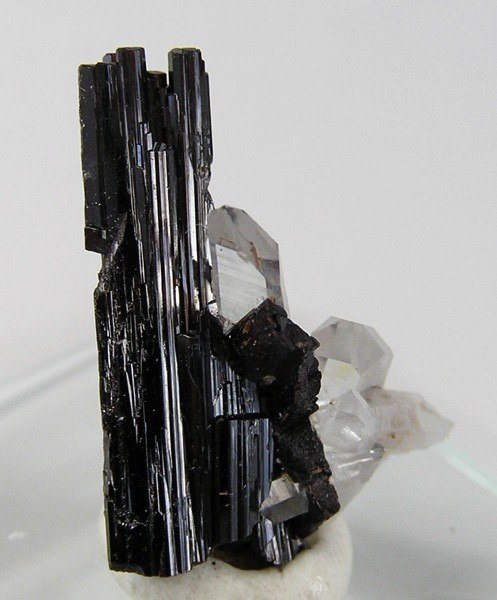Micas are a group of silicate minerals whose outstanding physical characteristic is that individual mica crystals can easily be split into extremely thin elastic plates. This characteristic is described as perfect basal cleavage. Mica is common in igneous and metamorphic rock and is occasionally found as small flakes in sedimentary rock. It is particularly prominent in many granites, pegmatites, and schists, and "books" of mica several feet across have been found in some pegmatites.
Mica
Sheets of mica
Photomicrographs of a thin section containing phlogopite. In cross-polarized light on left, plane-polarized light on right.
Dark mica from eastern Ontario
In geology and mineralogy, a mineral or mineral species is, broadly speaking, a solid substance with a fairly well-defined chemical composition and a specific crystal structure that occurs naturally in pure form.
Crystals of serandite, natrolite, analcime, and aegirine from Mont Saint-Hilaire, Quebec, Canada
Schist is a metamorphic rock characterized by an abundance of platy minerals. In this example, the rock has prominent sillimanite porphyroblasts as large as 3 cm (1.2 in).
Hübnerite, the manganese-rich end-member of the wolframite series, with minor quartz in the background
When minerals react, the products will sometimes assume the shape of the reagent; the product mineral is termed a pseudomorph of (or after) the reagent. Illustrated here is a pseudomorph of kaolinite after orthoclase. Here, the pseudomorph preserved the Carlsbad twinning common in orthoclase.








